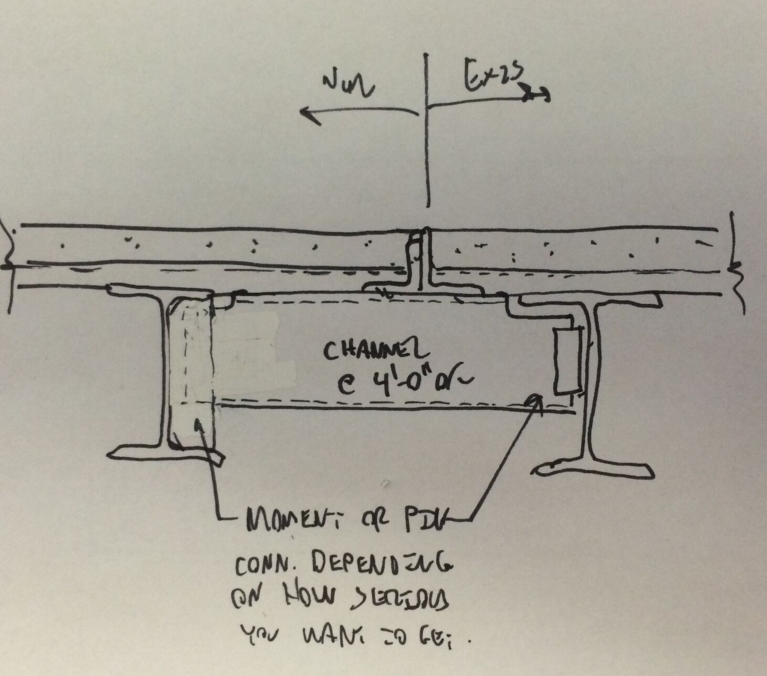bookowski
Structural
- Aug 29, 2010
- 983
I have an existing building with a 1.5" deck with 3.25" lw topping (4.75" total thickness). This is a roof over a restaurant and they are expanding the space. I have a new steel frame that will extend this slab by about 12ft (x 30ft in length). The new slab is independently supported vertically and laterally. I have my own new edge beam which will be parallel to and a couple of feet from the existing edge beam.
Question is about the existing slab on deck to new slab on deck joint. There will be an existing pour stop and then my new slab, likely with its own pour stop/closure. The architect is worried that this joint would allow water infiltration into the space if the waterproofing ever fails. This seems like excessive worrying but it is a very high end space and she is really on me about it.
I considered drilling and doweling from existing to new - but is this reasonable in 4.75" of thickness? This would at least keep the joint closed - but she's not very satisfied with that and I wonder if this is enough thickness. Technically it appears so by hilti, albeit with huge reduction factors.
Stitch weld a new closure plate to the existing pourstop and then cast in an expanding waterstop?
Feel like I'm trying to solve a problem that doesn't exist.
Question is about the existing slab on deck to new slab on deck joint. There will be an existing pour stop and then my new slab, likely with its own pour stop/closure. The architect is worried that this joint would allow water infiltration into the space if the waterproofing ever fails. This seems like excessive worrying but it is a very high end space and she is really on me about it.
I considered drilling and doweling from existing to new - but is this reasonable in 4.75" of thickness? This would at least keep the joint closed - but she's not very satisfied with that and I wonder if this is enough thickness. Technically it appears so by hilti, albeit with huge reduction factors.
Stitch weld a new closure plate to the existing pourstop and then cast in an expanding waterstop?
Feel like I'm trying to solve a problem that doesn't exist.

